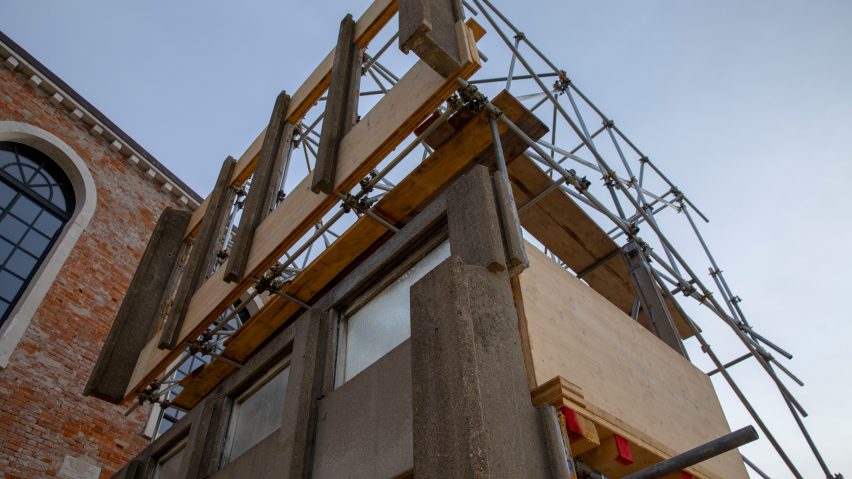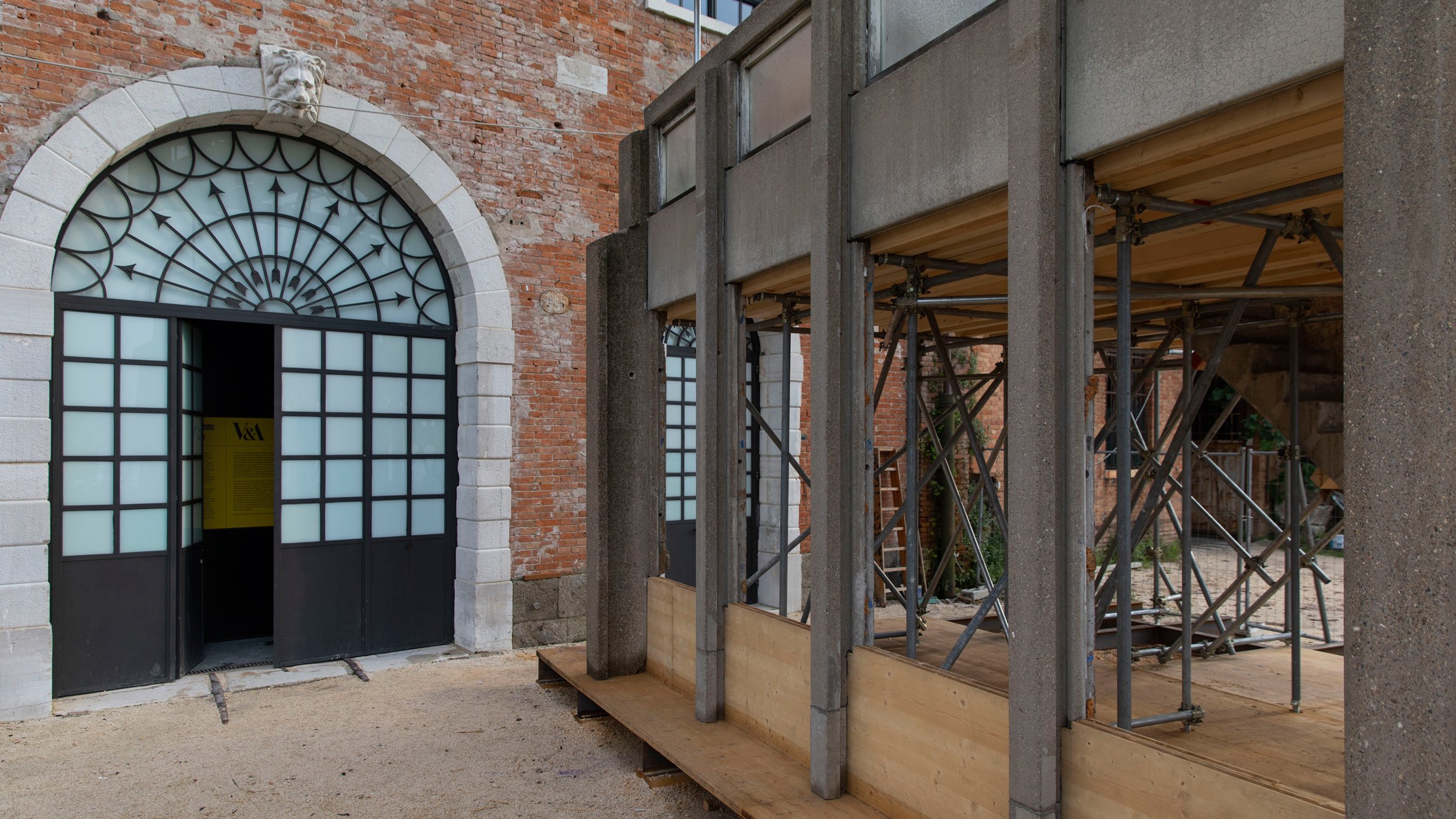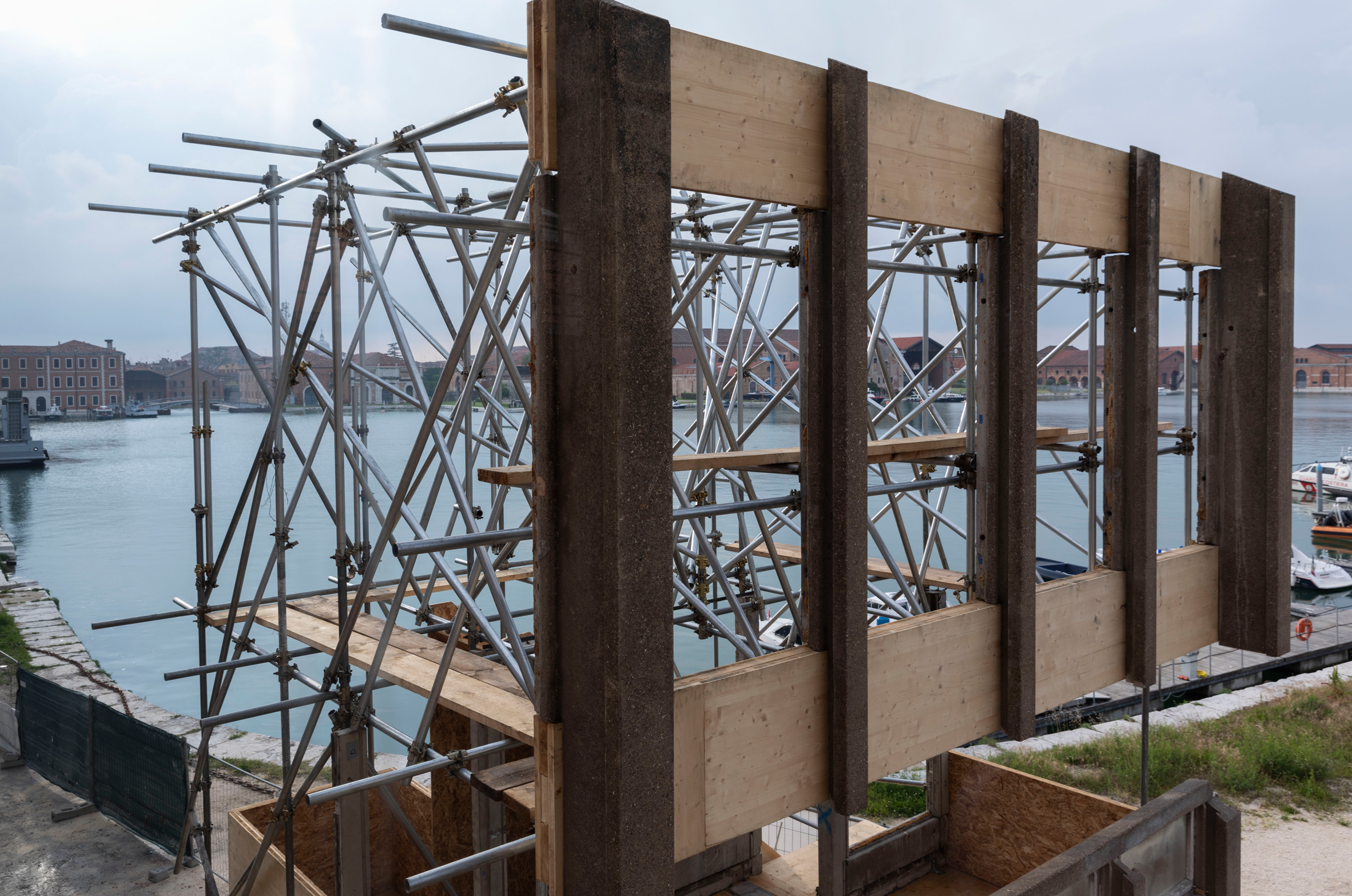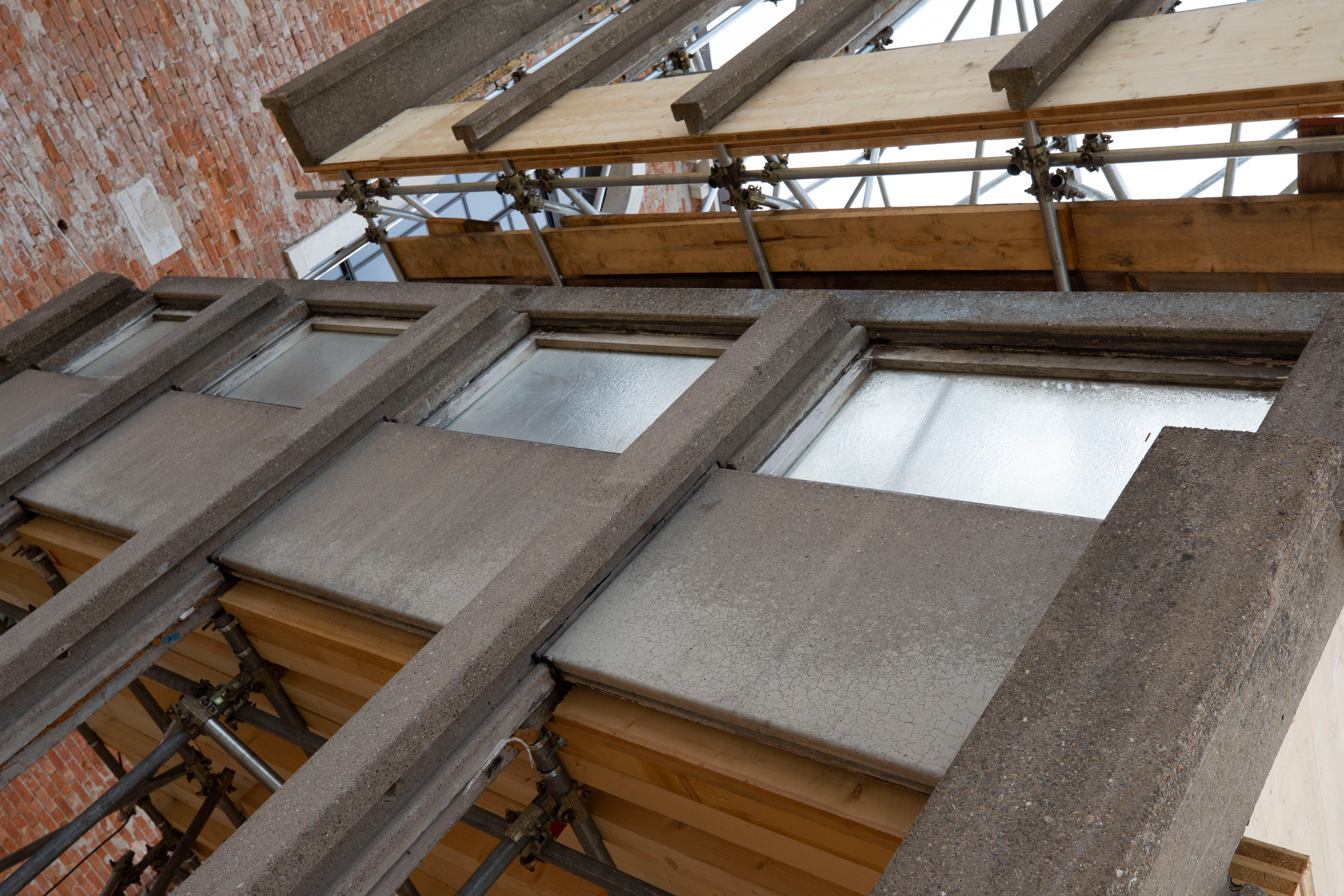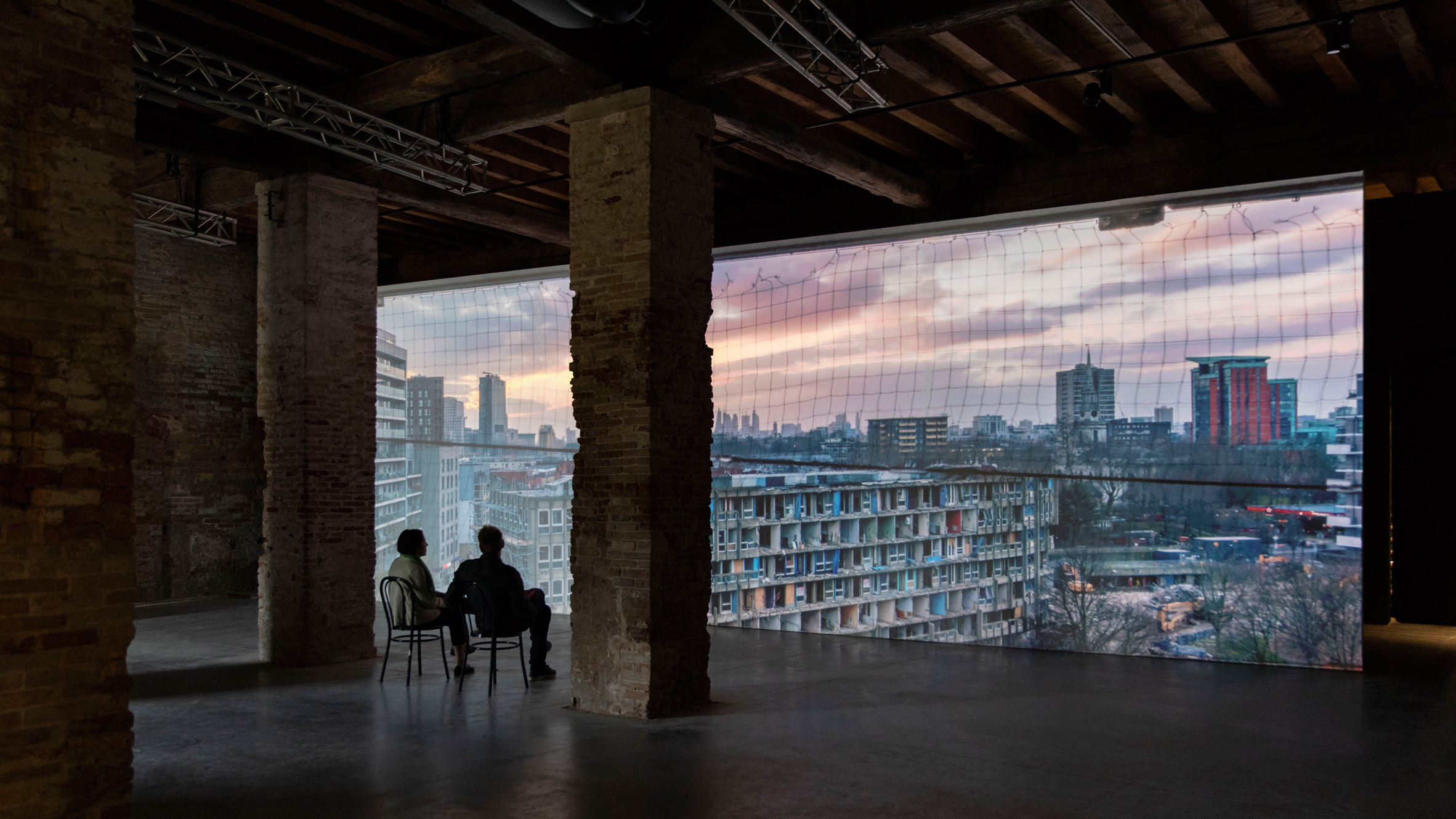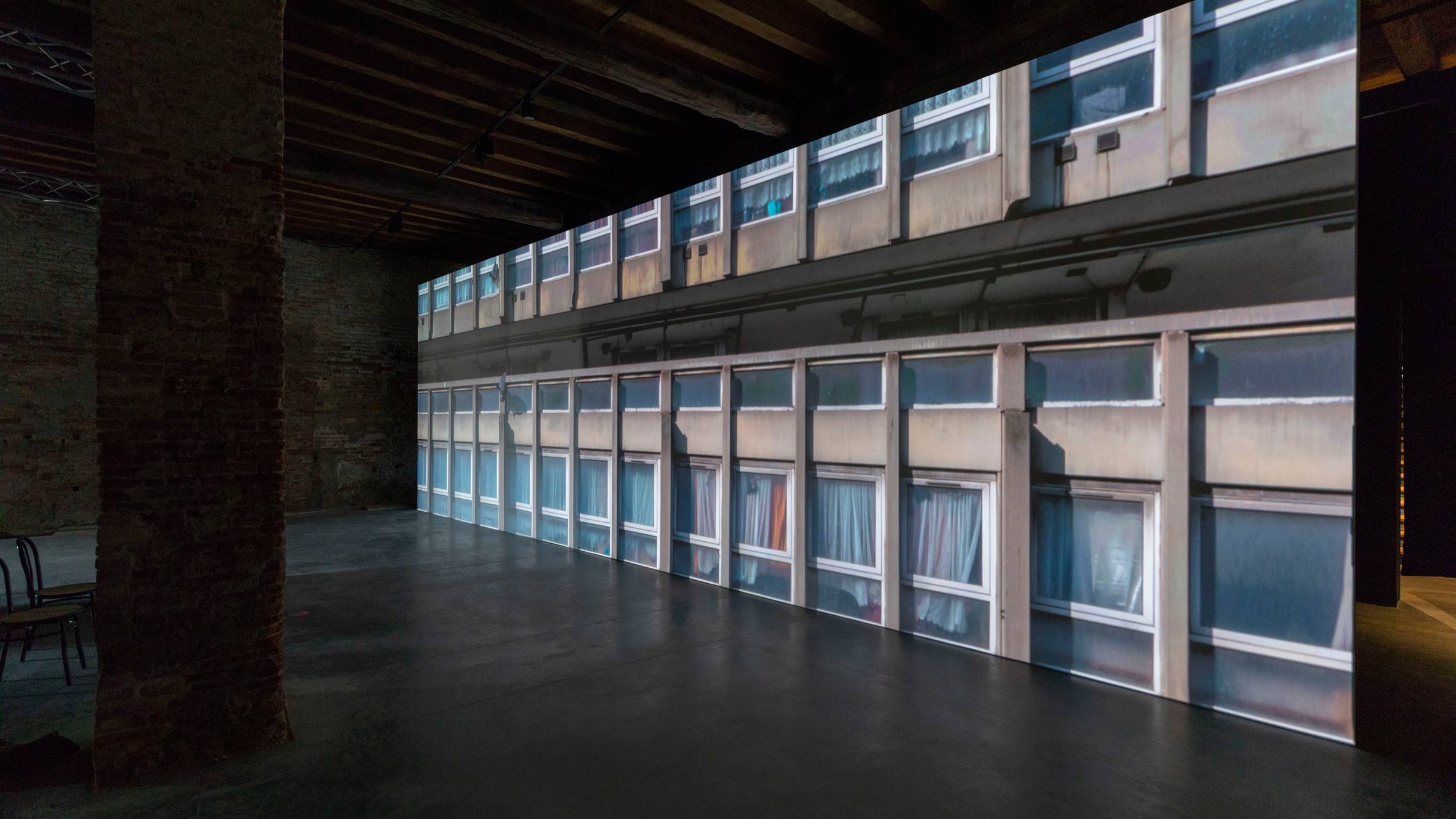Where can you find affordable 3D renderings? .Search Magpies Design 3D. www.magpiesdesign3d.com
December 13, 2018
V & A presents a large section of the Robin Hood Gardens at the Venice Architecture Biennale
Visitors to the Venice Architecture Biennale can walk the "streets in the sky" of London's Robin Hood Gardens, as the V & A Museum has sent a large part of the Brutalist urbanization to Italy.
As a key piece of the Robin Hood Gardens exhibition: A Ruin in Reverse, the fragment is the facade of an apartment of the famous Brutalist estate, which was built by the architects Alison and Peter Smithson in 1974, but which is now halfway of the demolition.
The various elements of the structure are held in place by a complex system of scaffolding, designed by the Arup engineers. This makes it possible for visitors to the biennial to climb one of the elevated corridors that were a key feature of the design.
The V & A shows part of the demolished Robin Hood gardens at the Venice Architecture Biennale
The V & A announced that it was acquiring part of Robin Hood Gardens shortly before the demolition began in December 2017. In addition to this section, which was specifically extracted for exhibition in Venice, the museum also took all the components to reassemble a bedroom full. flat.
It has not been announced when this larger fragment will be revealed to the public. But it will contain the modular furniture installed when the building was first opened, as well as the concrete structure and façade.
The pieces of the concrete facade are mounted on a scaffolding system devised by the Arup engineers, shown here while it is still under construction.
Robin Hood Gardens consisted of two blocks of concrete blocks, arranged on opposite sides of a large garden. The broad walkways, described as streets in the sky by the Smithsons, were intended to encourage the street life of London's traditional townhouses.
It is being demolished for a new housing development by the Swan Housing Association, despite a long campaign for the building to be listed as heritage, supported by many famous architects.
The installation allows visitors to the biennial to climb the famous "streets in the sky" of the building
This exhibition, located in the Arsenale area of the biennial, aims to explore the legacy of the estate and question whether or not it offers a model for the social housing of the future.
"The Robin Hood Gardens case is an arrest because it represented such a bold vision for the provision of housing, but less than 50 years after its completion it is being demolished," curators Olivia Horsfall Turner and Christopher Turner explained.
"Outside the ruins of Robin Hood Gardens, we want to see again the original ideals of the Smithsons and ask how they can inform and inspire current thinking about social housing."
The curators were careful not to "fetishize" the concrete structure and wanted to focus on how the building supported the lives of its residents. So the exhibition also includes a series of photographs and films, which offer a look at the building at different stages of its history.
The exhibition also includes a series of photographs and films that offer a look at the building at different stages of its history.
A film shows four apartments occupied by long-term residents, made by the Korean artist Do Ho Suh, who is known for his intricate recreations of interior spaces with wire and cloth.
Another is the 1970 BBC documentary, The Smithsons on Housing, which explores the social thinking behind design.
"We have tried to map the entire arc of the Smithsons' vision, the twists and turns of farm history and their destiny, and evaluate that as a whole," Turner told Dezeen.
"This was the golden age of the welfare state, this is when the architects of Great Britain had more power to create extraordinary buildings on a large scale," he continued. "Properties like Robin Hood Gardens, Alexandra Road [by Neave Brown] are amazing architectural achievements."
A film by the Korean artist Do Ho Suh offers a look inside four apartments occupied by long-term residents
In the context of the current housing crisis in London, both due to the shortage of affordable housing and the abandonment of properties owned by the city, such as Grenfell Tower, the exhibition seeks to explore what lessons can be learned from the farm.
"We were really interested in the generous architectural and social vision of the Smithsons and in unpacking that and using it as a lens to look forward to the future of social housing," said Turner.
The V & A Museum is located in the London Borough of Kensington and Chelsea, not far from the Grenfell Tower. Only 10 municipal housing units have been built in the municipality since former British Prime Minister Margaret Thatcher granted council tenants the right to buy in the 1980s, Turner said.
"How can we see what prevents us from being able to create affordable housing for everyone in our society? That's the big question," he said. "Increasing the value of land means that it is changing, we are asking what kind of city we want to build now, what kind of provision we want to create for housing in the city that is available to all."
"One of the big differences between when the Smithsons were building and now is that the boards had internal architecture teams and that's why they were constantly working on projects that were for the boards," Turner said. "Almost 80 percent of the architects worked for the council and now it's less than one percent."
Robin Hood Gardens: A Ruin in Reverse is on display until November 25, 2018, as part of the 16th Venice Architecture Biennial
This is not the first time that Robin Hood Gardens is exhibited in Venice: the Smithsons exhibited an image of it during the Venice Art Biennial of 1976.
Writing about the farm at that time, they said: "A building under construction is a ruin in reverse." This was the inspiration for the title of the exhibition.
Robin Hood Gardens: A Ruin in Reverse is on display until November 25, 2018, as part of the 16th Venice Architecture Biennial.
This year, the main exhibition is curated by Yvonne Farrell and Shelley McNamara of Grafton Architects under the title Freespace.
In an interview with Dezeen, Farrell and McNamara said that while architects do not have the power to fight global problems, small projects can make a great contribution to society.
Turner told Dezeen that the generous innovations the Smithsons offered to the residents of Robin Hood Gardens summarize this idea of generosity.
